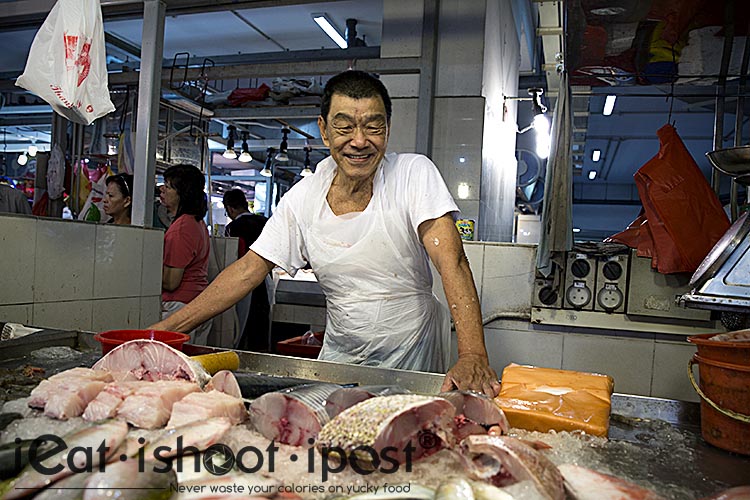
This stall is closed
I have spent the last few months rediscovering the wonders of our local wet market. Like a lot of Singaporeans, I (used to) do most of my grocery shopping at the supermarket. Well actually, most of the shopping is done by my wife so I don’t really shop for grocery unless I need stuff for my own recipes.
Then I started going crazy about prawns. I had been toying with the idea of cataloging all the different prawns available locally for some time but it wasn’t until this year that I resolved to go ahead with the project. Why prawns and not fish? Don’t prawns play 2nd fiddle to fish? At least that was the adage which I grew up with as a kid: “Boh Her Hei Ah Hor” (没鱼虾也好 – If there is no fish, then we will settle with prawns”).
Well, it’s very simple. To catalog all the local fish would be a monumental task, but with prawns I know there are perhaps 10-20 species at most which I had to cover. That made it a very doable project. Also, I was very curious about Ang Kahs and Sua Lors which I hear so much about in my conversations with the hawkers and I wanted to get to the bottom of the conundrum. I also realize that very little has been written about our local prawns online, so I hope my photos will be a valuable resource for anyone interested in prawns.
Another reason for my fascination with prawns is that of convenience. It just so happens that my local wet market happened to be quite famous for its fishmongers. I only found that out when I met a senior who had lived all his life in Hougang. He told me about the excellent fishmongers there who attract customers from all over Singapore! Wow, I never realized that I had such a treasure trove in my backyard just waiting to be discovered! Up till then, my perception of the Lor Ah Soo market was just a simple heartland wet market that somehow got misnamed. Everyone knows of Hougang as a Teochew enclave, so why was it called Hainanese Village Centre? It turns out that although there were a lot of Teochews living near the “river’s end” (lit translation of Au-Kang), there was also a Hainanese Village located at Upper Serangoon which the market was named after.
It might be called Hainanese Village market, but if you visit the wet market, the lingua franca is Teochew. Even more so when you are trying to buy seafood. Most of the fishmongers here have been selling fish for a long time, some since the days when there was a fishery port at Punggol. The port had since shifted to Senoko Fishery Port which is where the fishmongers still buy their seafood.
Buying good fish is all about relationships. Firstly there is the relationship between you and the fishmonger. Once you have established a good relationship with him, he will often tell you what is the catch of the day and let you in on a few secrets. Then there is the relationship between your fishmonger and the wholesaler. This is a very important relationship which is fostered through many years of working together. This is what sets the really good fishmongers apart from the rest.
Take Stall 1 for instance. The elderly fishmonger there will always have a pile of glass prawns 玻璃虾 for sale. Glass prawns are favoured by prawn fanciers for its sweetness and thin shell. It is also a prawn that is fished off local waters, so it is very fresh. The uncle tells me, quite proudly, (a typical Teochew trait) that the wholesaler at Senoko Fishery Port will always keep a batch of the very best glass prawns for him because over the years he has always paid a good price for glass prawns and he would buy some every day whatever the going rate may be.
The Stall 1 uncle is usually quite relaxed. He is semi-retired and so he continues to sell fish to past the time. Unlike a lot of other stalls that may prevent you from choosing the prawns, he would throw you a basket and ask you to choose for yourself. Occasionally, he had picked up a few unusual ones for me and tells me with a wink that these are the best eating ones!
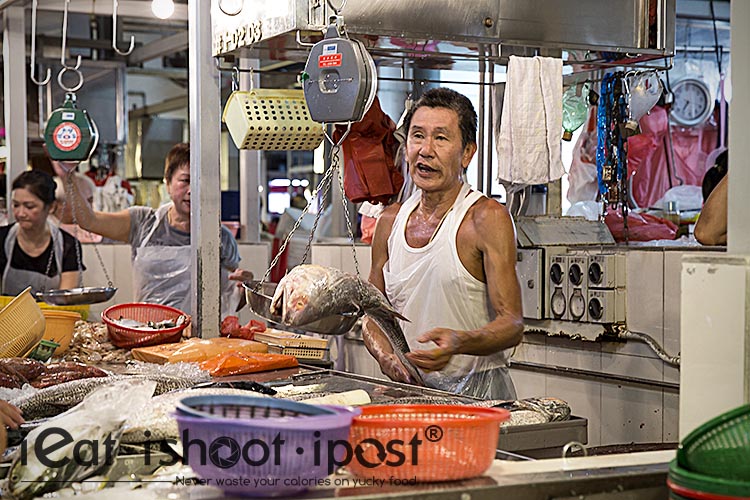
Stall 2-3 is by far the busiest stall on the weekends. This stall is run by an energetic uncle who has little time for chit chat as there is usually a crowd clamoring for his attention. There is another lady helping him who is stationed at the adjacent stall whom I assume is his wife.
This is one of the few places in Singapore where people don’t bother to queue. Here is where you can stand back and watch Darwinianism in action. You can’t be passive here. It is survival of the fitness. Only those who can nudge and shout will be able to get their fish before it is all snapped up by others.
They are only opened on Tues, Thurs and weekends. The uncle usually arrives with boxes of seafood at around 6.45am and people will start crowding around him while he unloads the seafood onto the counter. Some ladies would start picking their fish while it is still in the box at the risk of getting reprimanded.
I was told by a customer that he is popular because his fish is cheap and good and he is quite a nice chap. I have bought some really good Blue Tail Sua Lor from him as well as some Western King Prawns. The quality is excellent. The prices are also quite reasonable. The Sua Lor cost $13/kg which is about the going rate but they are bigger and fresher than a lot of other places.
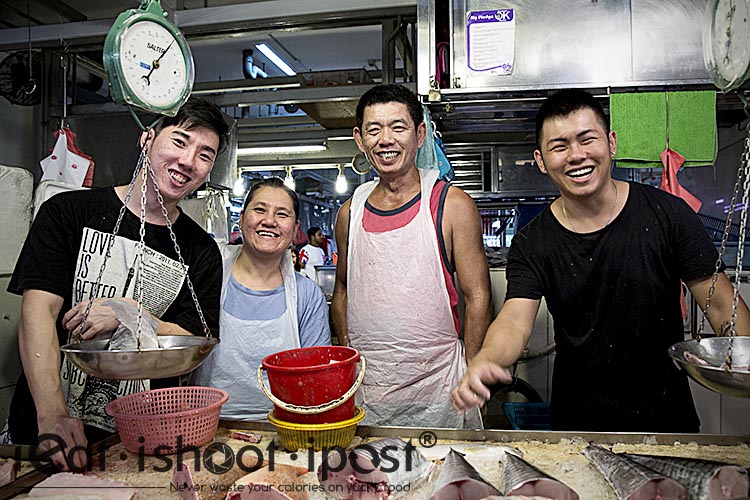
Over at stall 5 is where you can catch the rare sight of a family of fishmongers at work. Young fishmongers in their twenties are not a common sight and they represent our hope for the future. You will notice that most of the other fishmongers featured here are at least in their forties. So, I am very worried about the wet market of the future. Would it disappear altogether such that, God forbid, we all have to buy all our seafood from the supermarket?
The problem, it seems, is that the wet market has not kept up with the times. When I was a kid, my mom was a homemaker and she would often shop at the wet market in the mornings. Nowadays, both husband and wife work and because the wet markets only open in the mornings, they end up buying their seafood at the supermarkets.
I feel that the NEA needs to take this into consideration and design the markets to cater for young working adults. That means that they need to be opened in the evenings, not just the mornings. The morning market during the weekdays is usually pretty quiet. They only get busy on the weekends. Sometimes I wonder how the fishmongers can make enough? What young person would want to enter this industry?
I met a person who has been trying set up a standalone shop to sell local seafood. He told me that it is almost impossible to set up a seafood stall in the HDB heartlands as there are strict rules set up by HDB and NEA that is preventing him from doing this. Don’t you think that having a standalone seafood shop selling fresh local seafood is a great idea? Why is it we can only buy Japanese or European seafood at such places? There must be a change of thinking in order to cater for the next generation of Singaporeans, both the consumer and the fishmonger. Or else we will all end up eating generic prawns and cloudy eyed fish in the future.
Anyway, back to Stall 5.
The young chap on the right is Xiao Hei (小黑). He is the one whom I usually converse with. His elder brother is the quieter one. Xiao Hei tells me that they like to sell prawns because they don’t need to be gutted and scaled like fish do! I can usually find some nice Green Tigers or Sua Lor here. They also occasionally sell those little Southern Velvet shrimps which the locals call Tai Gor Hei (lit rotting skin prawns) because of their variegated appearance. These little Tai Gor Hei are excellent just simply deep fried with sprinkled of salt. (or Truffle salt?). I used them to make a superb Prawn Mee soup. At $5/kg, I could afford to boil a whole kg of prawns; meat, shell and all together with a bit of lemongrass and blue ginger to make a solid prawn stock.
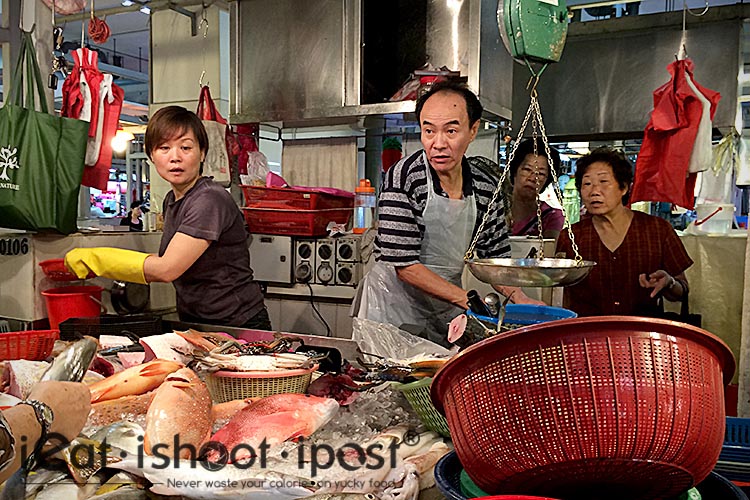
Stall 6 is one of those stalls who have loyal customers coming all the way from Bukit Panjang to buy his fish. If you are looking for Grade A1 fish, this is where you will find it. He usually sells out by about 10am everyday. His fish is more expensive than but it is quality stuff. I have never actually bought anything from them yet, but he has a stirling reputation attested not just by the aunties I spoke to at the stalls, but by other fishmongers at the market.
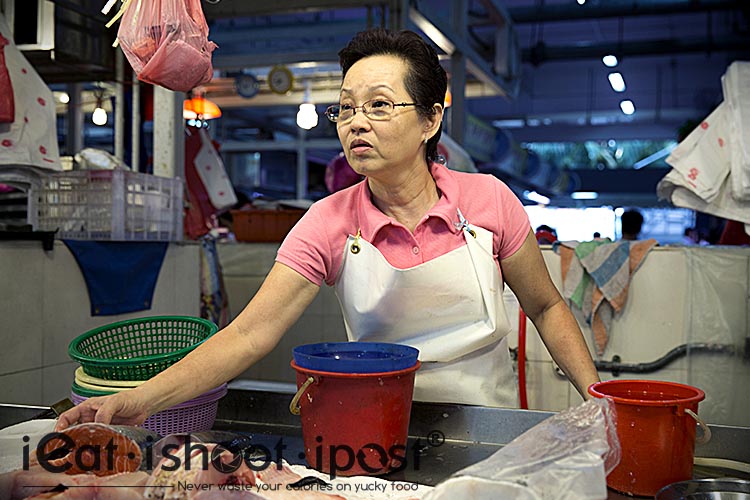
The lady at Stall 7 operates alone most of the time. How does a lady like her manage to go to Senoko Fishery Port and haul all that seafood back to the stall to sell? Well, it turns out that she gets help from the Sam and Mary from Stall 20 who would help ferry her fish back to the market in their pickup.
You have to admire this lady who has to single-handedly scale and gut the fish for her customers. Selling fish isn’t like selling veggies. You are not just paying for the fish, but also for the service of scaling and gutting of the fish. Try scaling your own fish at home and you will soon realize what a messy job it is and how it can clog up your sink!
She has a special supply of small Sua Lors which you don’t usually find at the other stalls. According to her, the wholesaler keeps them specially for her. These small Sua Lors are sweet and flavourful and would be excellent to fry with veggies or to stuff Sui Gao (水饺). I have also bought some excellent Western King Prawns from her.
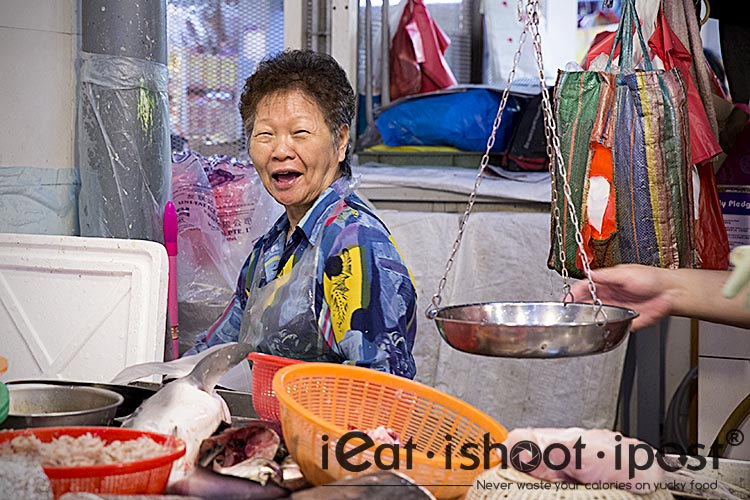
Stall 19 is where you can find seafood from Pengarang. The lady at this stall proudly tells me that 80% of her seafood comes from this region in Johor that is only a few minutes bumboat ride from Singapore. That means that most of her fish are fresh as they come from local waters. It has a reputation for selling really good seafood but it can get a little pricey. She is usually alone during the weekdays but on weekends, a young man (?son) would come to help her. She opens daily except for Mondays and hers is the only stall that is still opened at 3 or 4pm.
Here is where you learn one very important principal about buying fish. Just because a fish is fresh doesn’t necessarily mean it is the best. If there are two similar fish of equal freshness, one might be a Grade A fish and the other Grade B. Where the fish came from is of paramount importance. Even two fish that are caught in the same net may have subtle differences which only the really experienced fish enthusiast will know. This kind of information is usual beyond the reach of the normal consumer which is why one should invest the time to build a good relationship with the fishmonger.
This stall will usually have Glass prawns and Black prawns for sale and on occasions, you will find some wild caught Giant Tiger Prawns. On weekends she also sells live lobsters. If you are looking for prize catches like big Chinese Pomfret, this is where you will be able to find them!
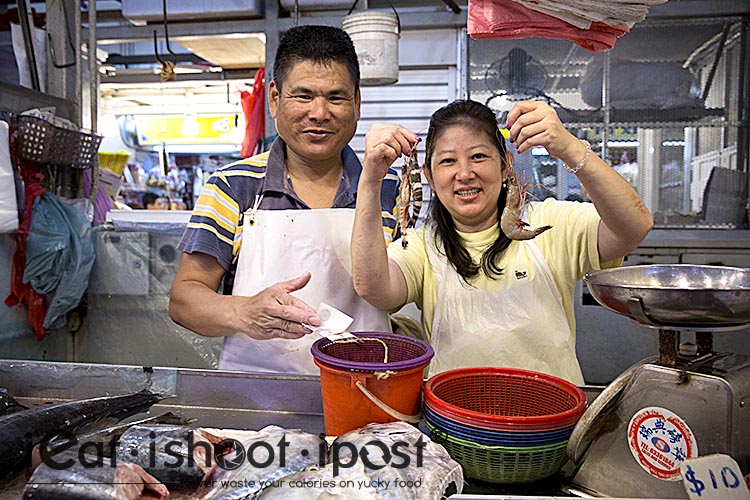
Stall 20 is one of the few stalls who bother to have a stall signage. Their stall is called S.A.M and is run by Sam and Mary. They are the fishmongers that I struck up a conversation with and subsequently allowed me to tag along with them to Senoko Fishery Port while they buy their daily supplies. They are not so much specialized in prawns although they will usually carry some live prawns at their stall. Sam goes fishing quite often and would sell his catches at the stall, so you can sometimes find very fresh local fish here. He caters for customers who want reasonably good stuff at a good price. If it is your first time visiting the market, you would find that he is one of the more approachable fishmongers there.
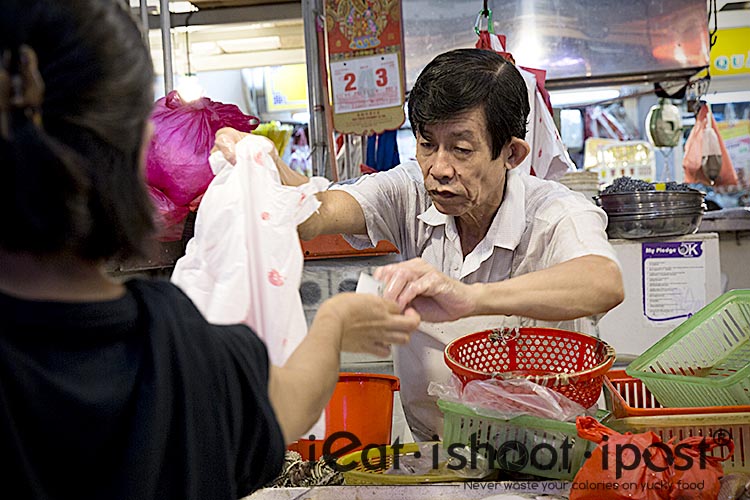
Next to S.A.M is Prince Charles (that is the name I coined for him). Prince Charles stall is very unusual in that he only sells small fish. Most of his fish is less than 1 foot long and he doesn’t sell any prawns. I have bought some nice leatherjackets from him but haven’t yet figured out why he does what he does.

This stall is closed
Stall 24 is manned by a white haired uncle who also has a reputation for really good seafood. He’s quite approachable and his prawns are usually very fresh. This is where you can find really good stuff like large Chinese Pomfrets!
Update: 27 Sep 2014
Sadly, this stall has been closed for the past few months! I think the uncle has retired!

There are two guys manning this stall at the end of the row and they usually display their fish in an orderly fashion. I have seen them sell “live prawns” in bulk at very good prices before. They are quite friendly and approachable.
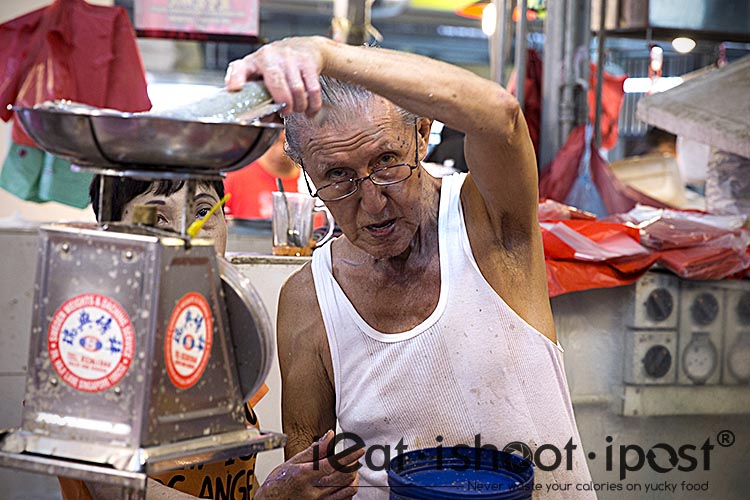
Stall 28 is manned by an old uncle who epitomizes what I feel about the industry. He is hunch and gaut and I look at him and ask myself what the wet market would look like 10 years from now. Quite a few of the other fishmongers are around his age and should be retiring soon. It is amazing that they are still able to wake up in the early hours of the morning to buy the seafood and then man the stall till about lunch time.
His fish is usually piled up on the counter and it doesn’t seem as if he bothers to arrange them. It always gives me the impression that his fish comes from the kelong as they are usually of varied species and sizes. You will find a lot of small fish here which is what the Teochews like. He will also have a bag full of small Sua Lors or other small prawns for sale.
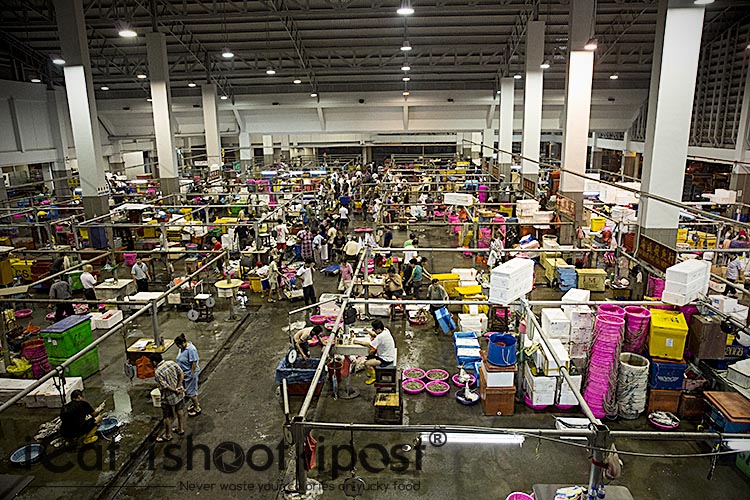
Most people know about Jurong Fishery Port which is the larger of the two Fishery Ports in Singapore. The fishmongers of Lor Ah Soo market buy their fish from Senoko Fishery Port which used to be located in Punggol. Any one can visit the fishery port, all you need to do is to change your IC or driving license at the guardhouse. The action starts at around 1 to 2 am.
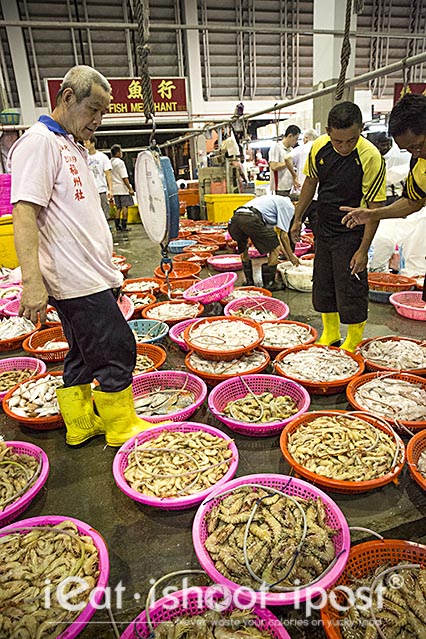
You can buy seafood here but they usually sell by the baskets. So if you are looking for 10kg of prawns for a party, you can buy them direct from the wholesalers
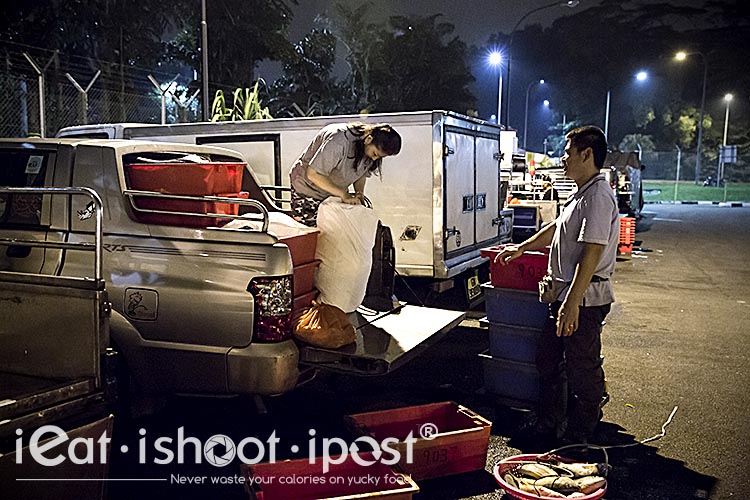
I met with Sam and Mary at 2am. I followed them as they went around the market searching for good buys for the day. By about 3-4am, they will pack all the fresh seafood onto the truck and head off the Lor Ah Soo market to start selling the fish.
Conclusion
If you have been buying your seafood from the supermarkets, then I hope that you will be motivated to start visiting your local wet market soon! You might feel a little lost at first, but after a while you will find a local fishmonger whom you can trust and start enjoying really good quality seafood!



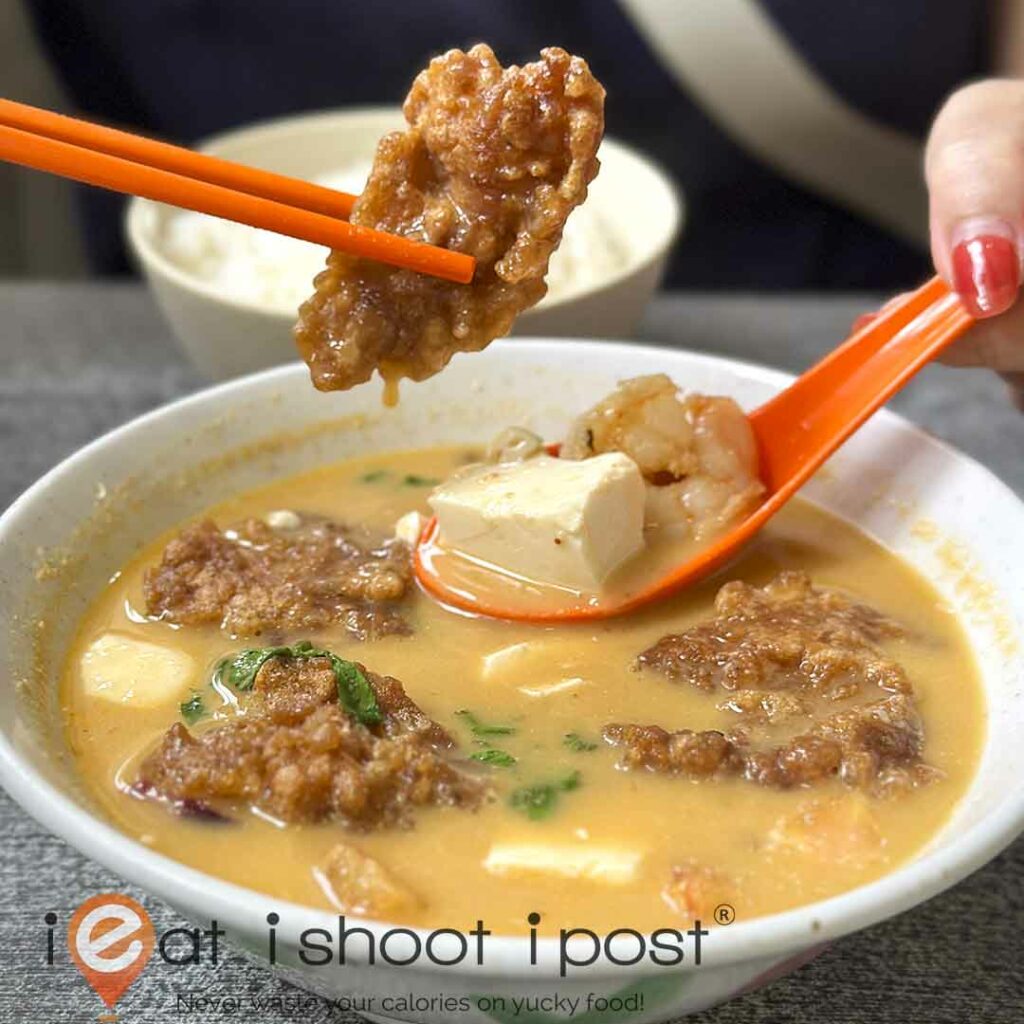
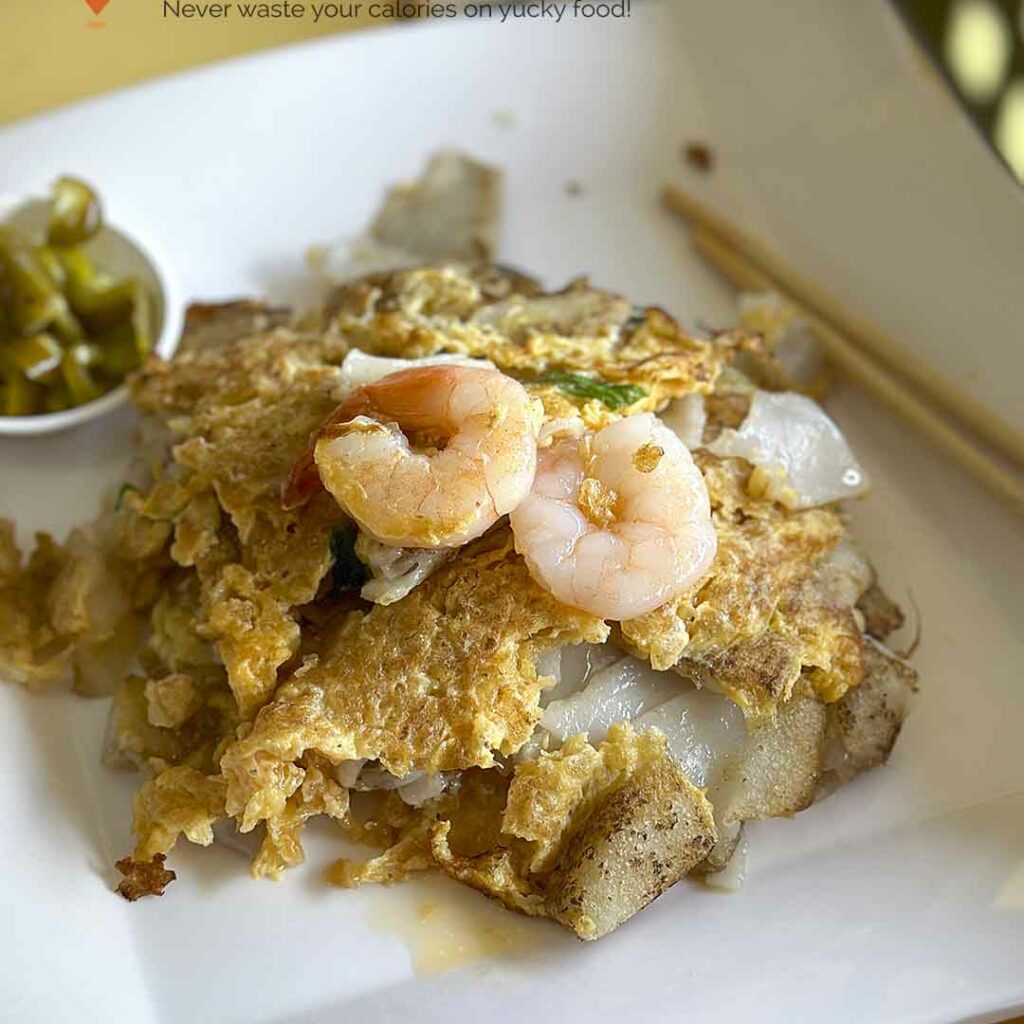

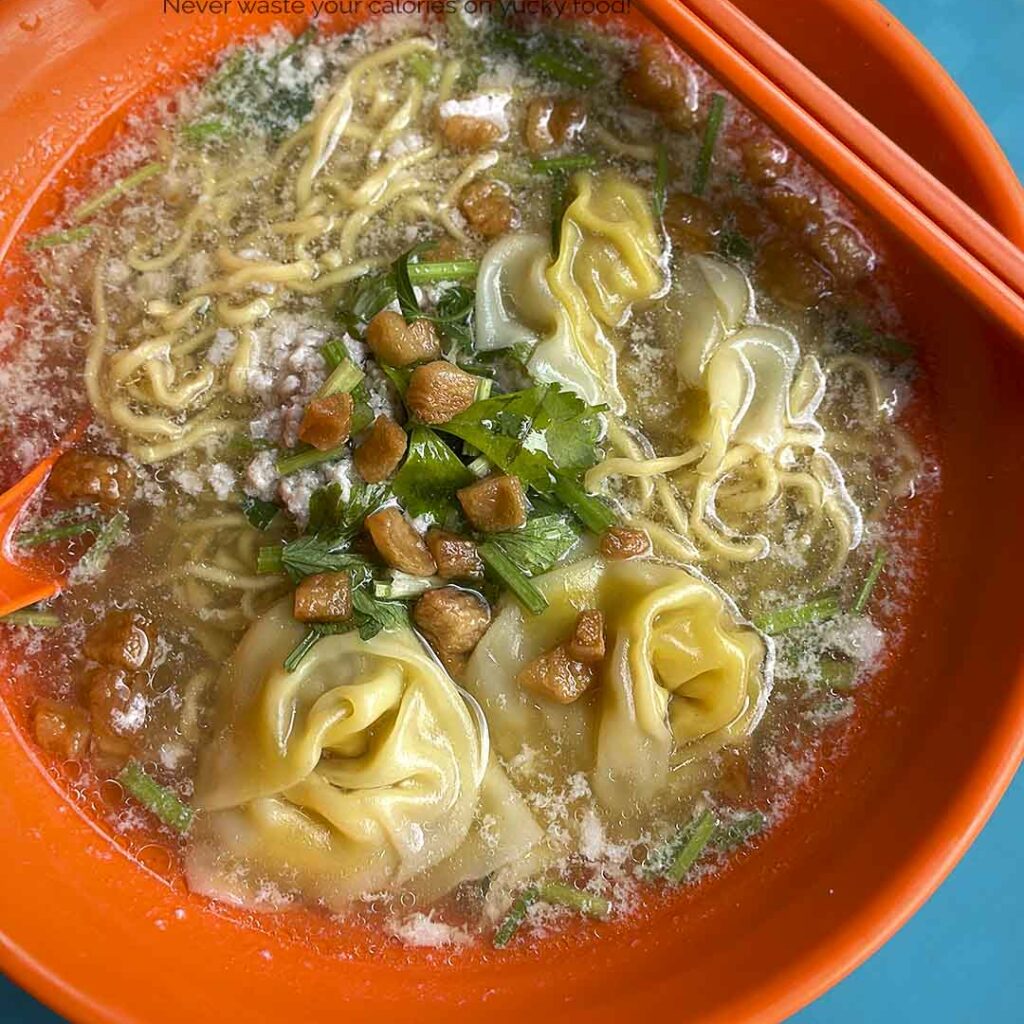





My wife and myself were the supermarket goers type as both of us are working and by the time we got off from work, the wet markets were already closed.Furthermore, Sat and Sun morning are very precious times to sleep in – It was not until we have our kids who wakes up early even on weekends that we started to go to the wet markets on every Saturday to do our marketing for the week (that’s the best we can do!)
I would not use ‘fresher’ to describe the kind of food you can find at the wet markets vis a vis the supermarkets, since most supermarkets do sell their wares on the same day that they were acquired from the respective sources, but rather, the quality (or what you mentioned, grade) of the food. This is especially true if you have bought from the stalls a couple of times and the owner recognizes you and recommends you the best of the lot.
Sadly, couples like us visiting wet markets are quite a rare scene, most of people we see at the market are the older folks, perhaps in their 50s to 60s, my wife (in her early 30s) still gets called “Xiao Mei Mei” (little girl) whenever she visits the wet markets stalls.
Thanks for your comment! We must continue to support them because they will die out if we don’t!
Hi Dr Tay, thanks for this insightful article about our local wet market. I have been researching fish markets in Singapore and was especially fascinated with the notion of our ‘little Tsukiji’ at Jurong and Senoko; will try to head down one day to see it live for myself.
I have a question to which I cannot get a definite answer to and I was hoping you could help. To my understanding, there is no such thing as sashimi-grade fish, since sashimi-grading usually refers to the knife skills of the chef. Would any fish from the oceans be safe to consume raw then? I understand that fish are usually blast-frozen to kill parasites and whatnot before they make their journey to the port a few weeks later. I assume the tuna caught in by our local boats and trawlers would not have such technology? Saw a tuna at the Prime supermarket the other day, and was thinking about bringing it home to make my own negitoro.
Sashimi grade fish has to be handled properly from the time the fish is caught till when it hits the cutting board. Most of the time I will only eat sashimi if it is explicitly stated that it is sashimi grade.
Thanks, doc for a wonderful article on buying fish at wet markets or fishery port. Had a friend who drove all the way up to Johore near the coast where he buys direct from the fisherman and keeps the fish in an ice box to bring back to Singapore.